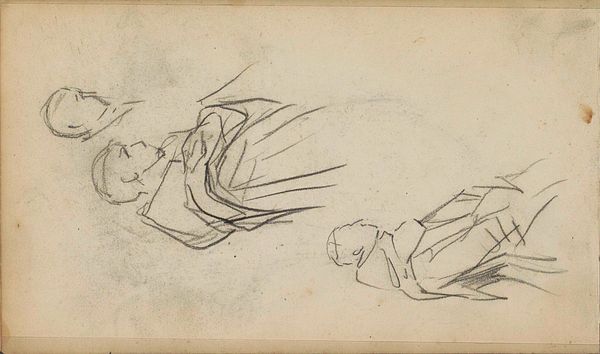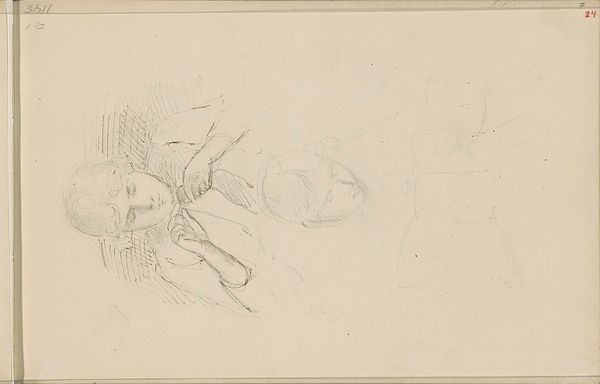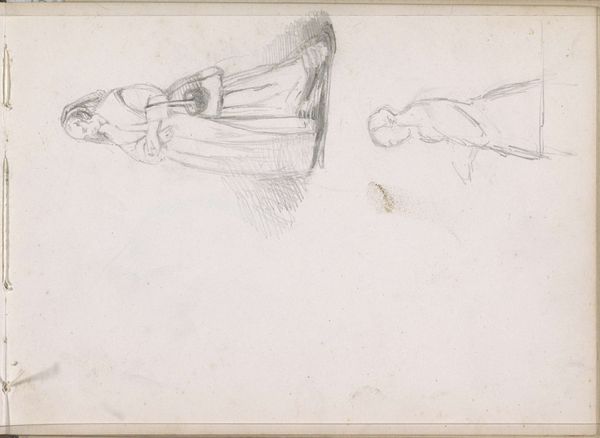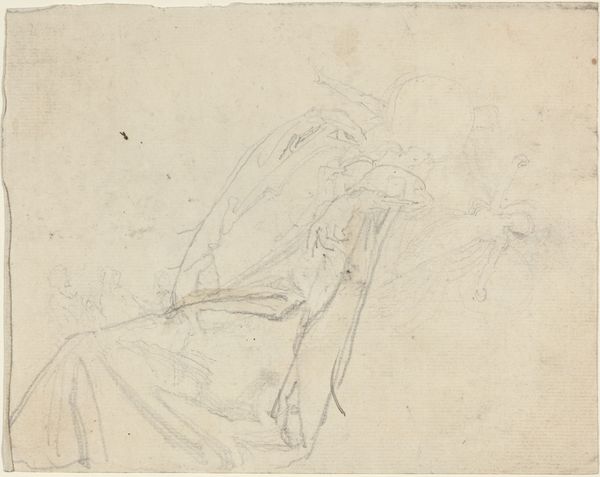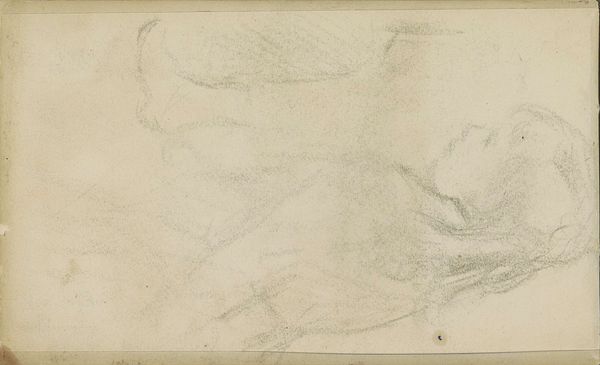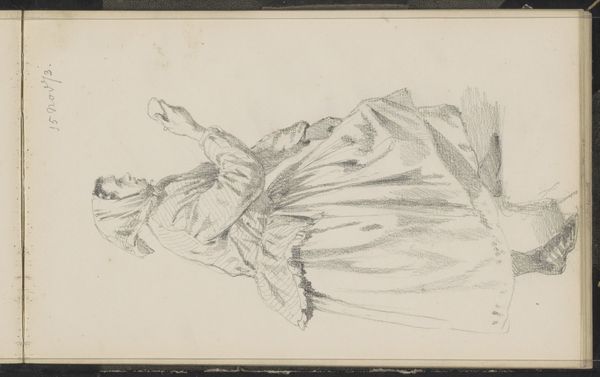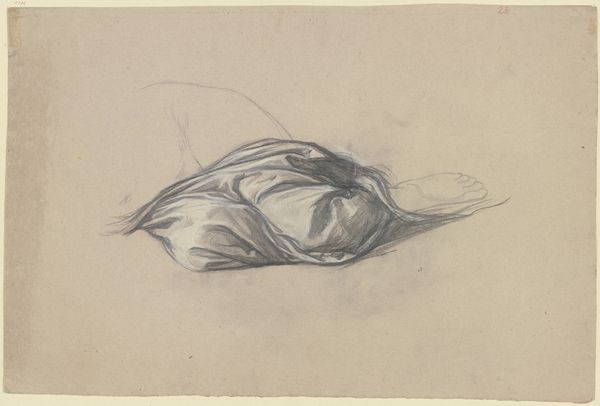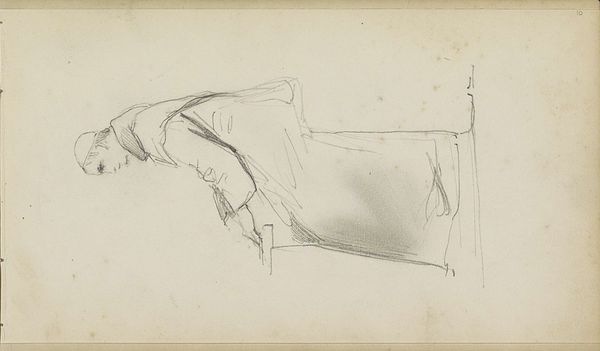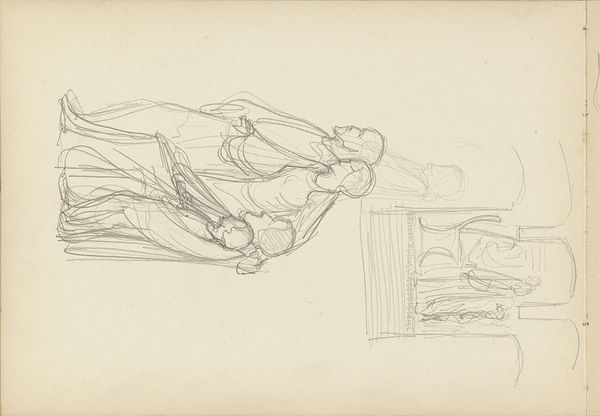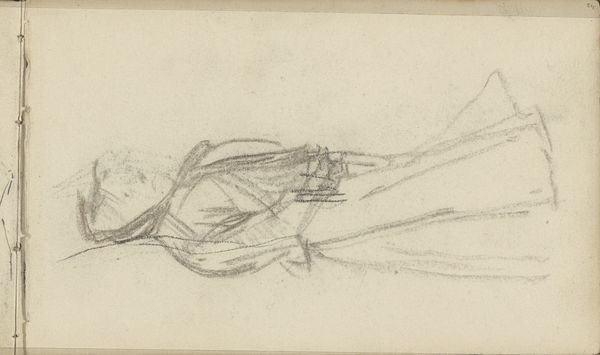
drawing, pencil
#
portrait
#
drawing
#
amateur sketch
#
light pencil work
#
pencil sketch
#
incomplete sketchy
#
figuration
#
personal sketchbook
#
idea generation sketch
#
ink drawing experimentation
#
detailed observational sketch
#
pencil
#
sketchbook drawing
#
sketchbook art
#
realism
Copyright: Rijks Museum: Open Domain
Curator: Jozef Israëls, active between 1834 and 1911, is credited with this work. It’s entitled “Figuur in een jas tot op de enkel,” or "Figure in an ankle-length coat," and was rendered using pencil. Editor: You know, looking at this, it feels so raw, almost like glimpsing someone's fleeting thought on paper. There's a fragility and honesty here that I find captivating. Curator: Absolutely. What stands out for me is how Israëls captures the human form with such minimal lines. It reminds us of the academic tradition of ébauche, or first sketch. The quick pencil strokes provide an impression of weight, particularly in the coat itself, which seems to hint at melancholy. The incomplete rendering has a unique visual and emotional economy. Editor: Melancholy definitely resonates. It feels like this figure is burdened by something, maybe just the weight of existence. I am touched by the vulnerability, this almost careless execution which conveys so much emotion in such simple strokes, like charcoal whispers. Curator: Israëls, known for his Realist depictions of working-class life, was interested in revealing empathy through his images. Even in a sketch like this, the figure evokes the hardships and resilience of ordinary people. His loose sketch lines contrast with the weightiness suggested by the subject’s coat. The symbolism isn’t overt, but the pose and the clothing create a story. Editor: And there’s an inherent loneliness, isn’t there? It feels so deeply human. In our world of hyper-polished imagery, there's a rebellious beauty in how unfinished this is. I imagine the artist quickly captured his essence while pondering greater themes like human empathy, labor, or faith. Curator: I agree. This work exemplifies how drawing, in its purest form, reveals emotional, cultural, and perhaps psychological nuances, regardless of whether it’s "finished." In the sketchbook context of its creation, “Figuur in een jas tot op de enkel” seems more like a reflection than a representation. Editor: Ultimately, that might be why it lingers with me. Thank you for illuminating that so clearly. Curator: My pleasure. It’s been a valuable exercise to contemplate how simple lines communicate complicated human issues.
Comments
No comments
Be the first to comment and join the conversation on the ultimate creative platform.
